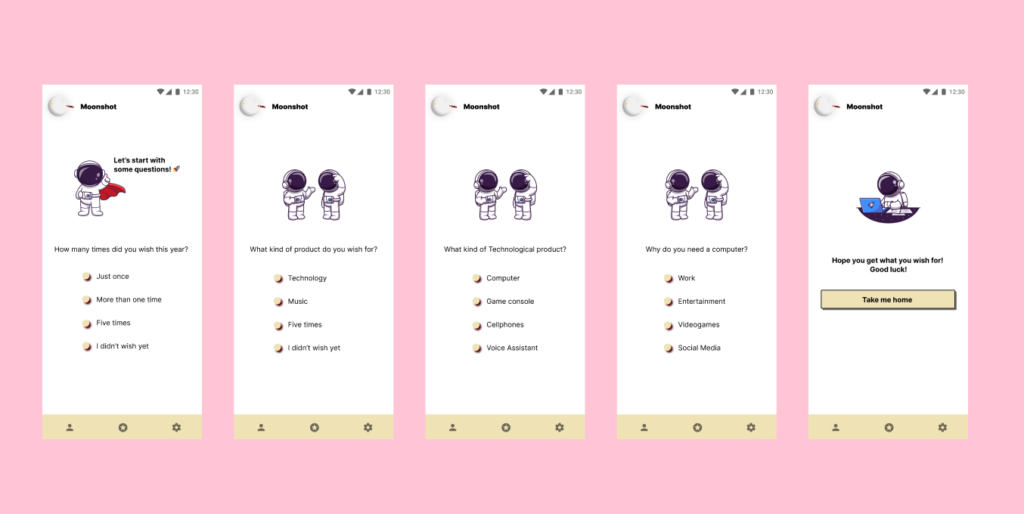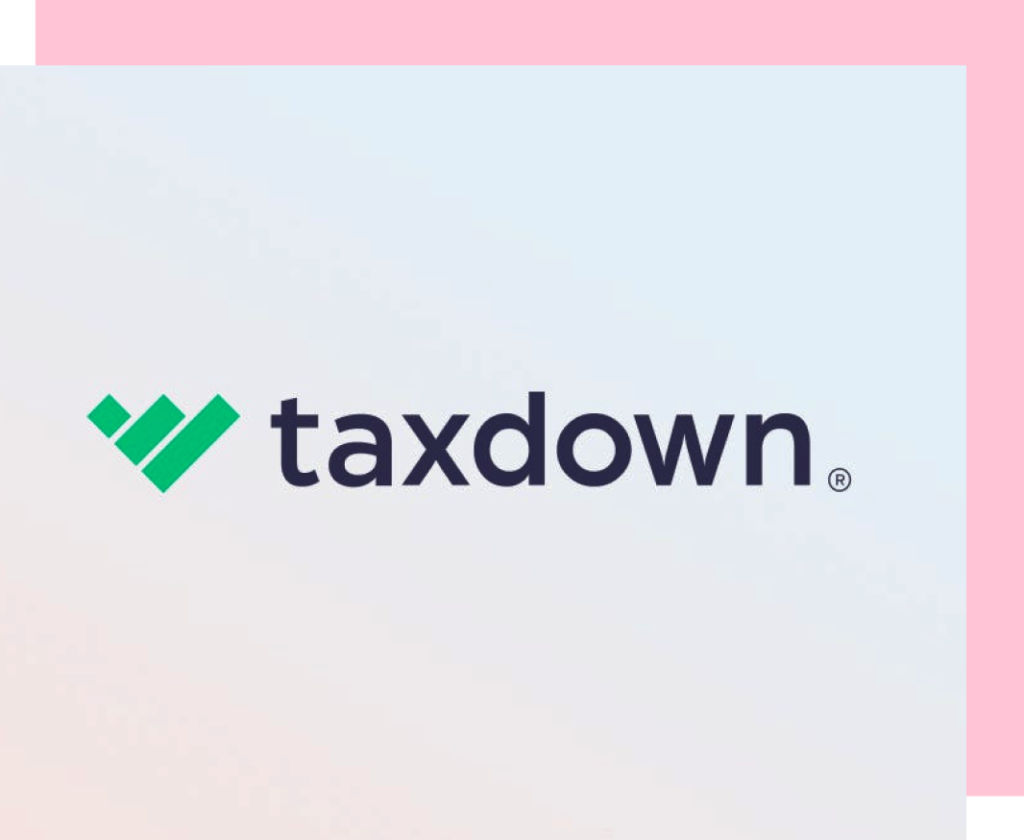The problem
- For this exercise, the company Taxdown proposes a challenge: The company Moonshot is a company that makes users material wishes come true. The delivery of these wishes is done through teleportation, and only one wish per year is allowed with a 5% chance of success.
Research & Analysis
For this challenge, I set out to follow techniques used in the Design Thinking methodology, as I believe it is the most appropriate for this purpose. Although in a real project, I would use more techniques to delve into the problem, such as interviews or surveys, I have used the ones I thought would provide me with the most information. Based on the kickoff of the challenge, I come across three key requirements:
- The company, in this case, ‘Moonshot,’ needs a mobile app.
- They require the user to be able to access it through an email and password login.
- The user must be able to answer questions to define their wish.
Although we cannot follow the methodology point by point to delve deeper into the topic due to the limited time we have, we focus on the key points to be able to carry out ideation as quickly as possible. To quickly recall the process, we use the outline of this methodology.

Benchmark
To begin the empathize process, one of the first research techniques I use that helps delve into the topic is benchmarking, looking for apps that have a similar functionality with wish lists and questionnaires that users can complete. I highlight 3 apps on this topic:
- Ultimate Wish List: It’s a very simple operating system, creating a list of things you want to have on your wish list. It gives you the ability to add its category as an item, price, location (if it’s on a website or physical store), notes, whether you’ve already bought it, and even a photo.
- Wishupon: An app that, when you install it, welcomes you with an explanatory onboarding (the previous app didn’t have it). What sets this app apart from the previous one is that instead of the user manually adding the item they want to their wish list, they can visit a website and share the product they want with this app, so it is automatically saved to the list and notifies you of any deals, including that product.
- Gifster: This app explains all its functionality on the very first screen when you open it. Here, we find that there is a community of users who use the app. In other words, if you want to give a gift to a family member, you can simply go to their profile and see the products they have on their list, allowing you to purchase what they want without fear of making a mistake (although it also takes away the element of surprise).
Definition
Having obtained information through benchmarking, I come up with many more goals that the app should achieve, in addition to the ones that are essential for the challenge. Due to time constraints, we define directly what we need. I highlight 3 apps on this topic:
- First, add an onboarding process to make it easier for the user to understand how it works.
- Also, include a user history feature so they can organize their wishes in their control panel (using Pocket as an example where you organize liked content by tags).
- Update the user’s feed daily, creating content that matches their wishes, such as fulfilled wishes of other users and product recommendations they may desire. For this goal, a search function could also be added to inspire and motivate the user.
- Additionally, update the FAQs to address any user inquiries and provide a contact method.

When the user enters the Moonshot app and clicks on the first call to action (CTA), they will see an onboarding process to explain how it works, with the option to skip it and view it later. After that, they can proceed to the login screen.
In the login screen, they can either create an account or log in, and they can also log in through other accounts like Google, Facebook, or Apple if they prefer not to register manually.
Once logged in, the user will see their session, and the basic navigation tab bar with the main functions of the service will appear. These functions include the user profile (where they can configure their account), an icon to view their wish history, an icon for FAQs (frequently asked questions) and contact options, and an information icon where they can access the app’s functionality at any time.
On this same screen, the user’s feed will display a series of cards that they can scroll through to see the prizes that have been awarded that day, along with a CTA button to make their wish. These cards will be customized according to their needs and preferences.
The next screen would correspond to the questionnaire that the company requests to answer questions about the product the user wishes for. Once the questionnaire is completed, it will be saved in their wish history, as mentioned earlier.
Prototyping

As the company is called Moonshot, and the ultimate goal is an app about wishes, the logo itself features a moon with a car (because users can make their material wishes come true). I’ve also included images of astronauts as a symbol of the moon and wishes.
I have used the Inter typeface with appropriate sizes for the mobile version, 14/16px, and an h1 size of 24px only for the logo on the initial screen. As for colors, I have chosen a light and a dark shade along with an accent color to highlight key points such as CTA buttons.
In this case, I have designed the screens following the Android Material Design system.
There are also additional screens displaying examples of the questionnaire that the user would fill out to make a wish, along with a final screen to confirm to the user that their request has been successfully submitted, following Nielsen’s heuristics to show the user the system’s status:

Conclusions and future prospects
- If more time were available, it would be advisable to conduct interviews and questionnaires prior to ideation in order to empathize and better understand the problem that needs to be solved.
- Create user personas with their user journeys.
- Create a possible empathy map.
- Develop screens that better represent the idea based on the responses obtained through the questionnaire and interviews.
- Create matrices to refine the idea, as well as business models.
- Further develop screens on how Moonshot would announce if you have won your wish.
- It would be interesting to create a community of people using Moonshot through social media for greater app promotion.
- Test the prototype. If we obtained results from this testing, we could further improve our product and empathize better with our previously defined user.
